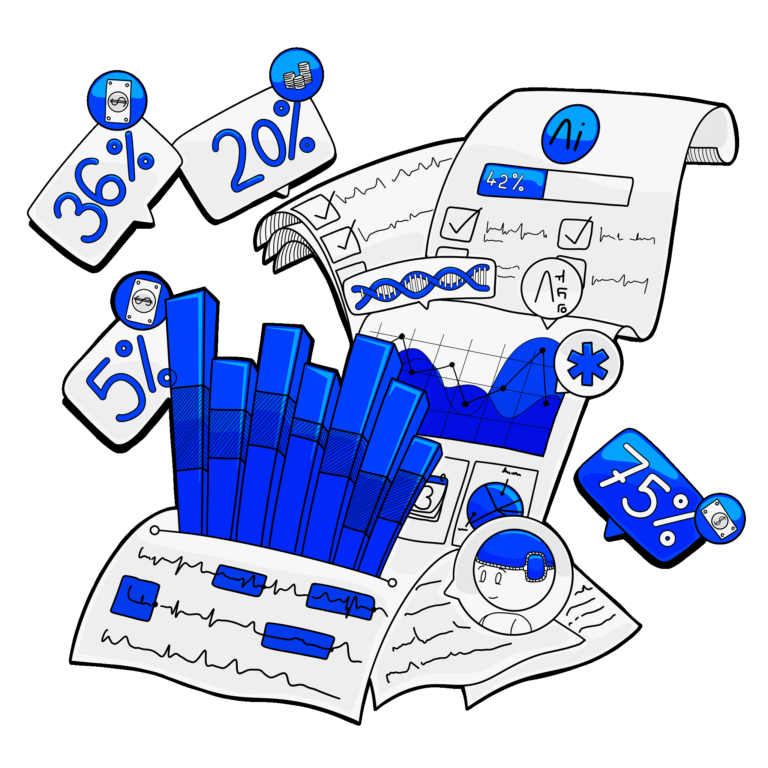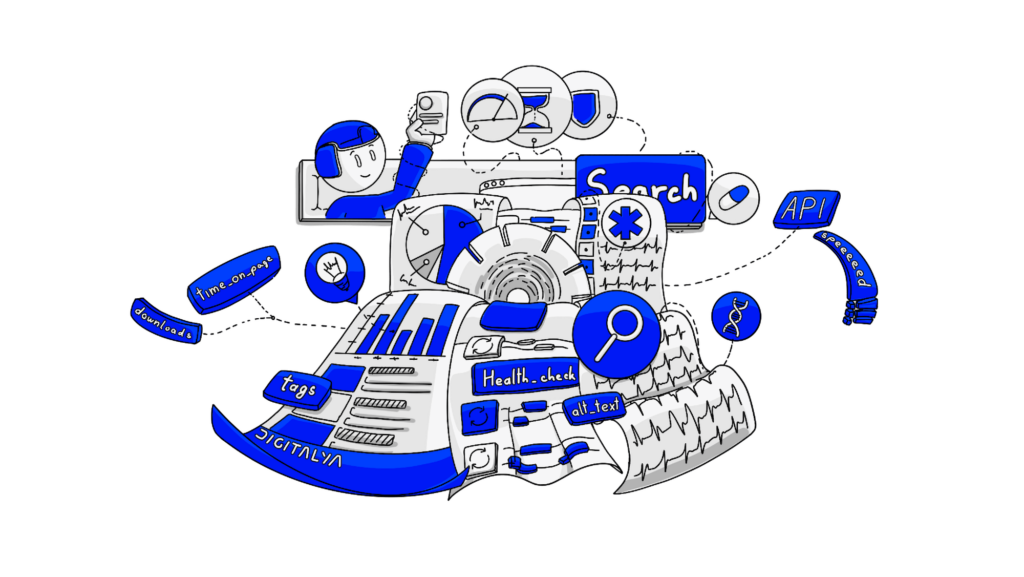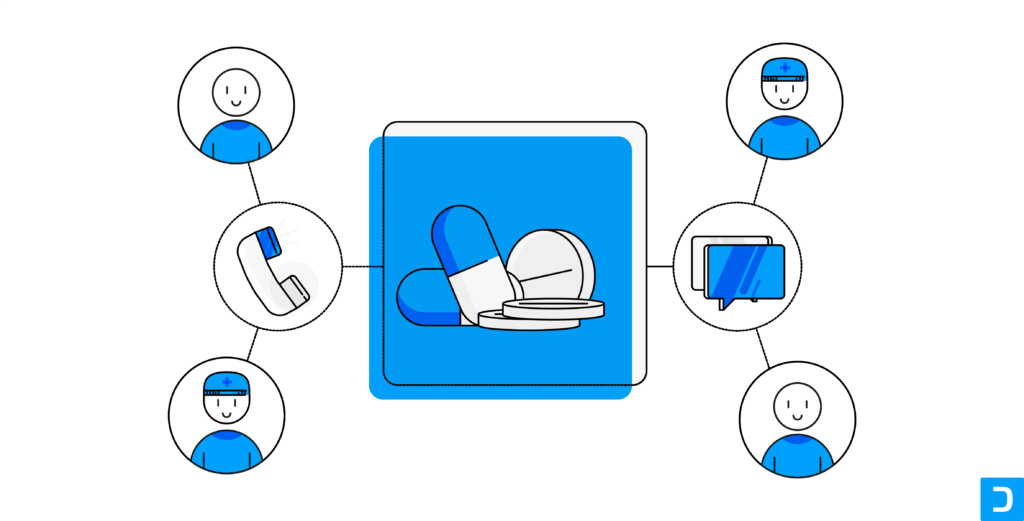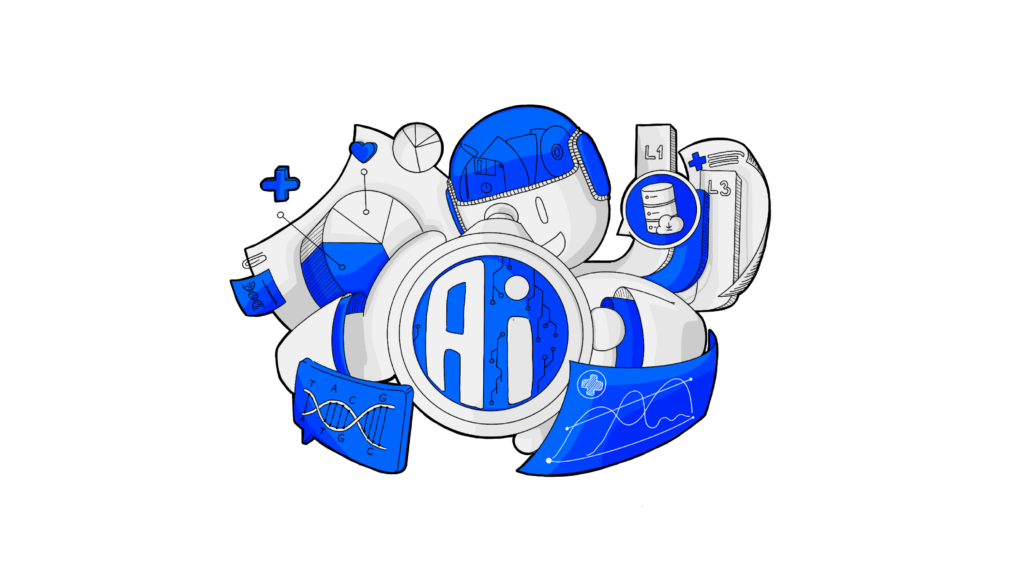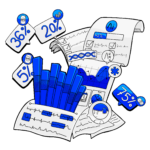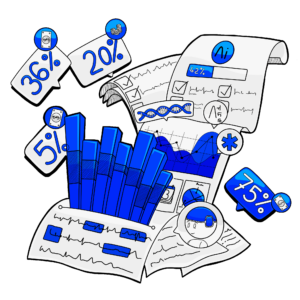Successful business owners constantly concern themselves with how to maintain a great product or a business. To manage a project that ultimately builds and delivers a product, incremental processes are employed (a series of steps).
This will ensure that the overall product evolution is valid and can be easily managed throughout its development. The final result impacts the entrepreneur, the company, the team, and the customers. So how can you maintain the standard high? Is there a development method that achieves just that?
A simple answer would be product iteration. And in today’s article, we’ve put together the ultimate guide to product iteration where we’ll walk you through:
1. What is product iteration?
In business, when we talk about iteration, we point out a cycle that is constantly repeated to continuously improve a product or the practices in play. For example, undergoing a number of feedback sessions, a set of requirements, and evaluations will, ultimately, bring forth a viable, perfected feature that will work for you.
Imagine that you have a limited income and resources and that you want to create an app from scratch. You will inevitably take into account what you can and cannot afford. So wasting time or energy on product ideas that are uncertain or hard to define is a definite no because you want to employ a product strategy. So using iterative development, allows you to create marketable products with much less financial risk.
A good example here is Elon Musk with SpaceX. His approach for building rockets is called iterative development and twenty years ago, no one believed that he would disrupt an entire industry with his business. But by undergoing several cycles of creation, testing, and evaluating development methods, his team continuously worked towards the final product that, ultimately, was capable of delivering the features and the final product that worked flawlessly. David Giger, a SpaceX engineer, explained:
SpaceX was built on ‘test, test, test, test, test’. We test as we fly
Furthermore, iteration in product development is a process that originated from the practice of Agile software development. According to Rocket Startup,
the goal is to begin implementing a feature right away as opposed to spending months analyzing how to implement it. It’s a learn-by-doing approach that rejects overthinking in the early stages of a project.
2. How do you iterate a product?
Let’s say you’ve been working on your product idea for some time now. You have a plan, a few designs ready and you are in that stage of development where your product team also has several prototypes put together, to eventually reach product validation. But, at this point, things get exciting because you can request user feedback and start reaching out to potential investors to see how your idea can help their business. The feedback is crucial because it can lead to both small and huge changes so you can continuously improve on your product vision.
The process of iteration is essential for the minimum viable product (MVP). Creating an MVP is an iterative process with the role of identifying user pain points and determining the appropriate product functionality to address those needs over time. If you wish to explore more on the topic, read about 5 awesome MVP examples, and make an informed decision.
So, to iterate for success, you can follow these 3 simple steps:
- Understand the goal of your product and its capability. What problem in the market does it solve? What benefits does it provide and in what form?
- Identify your targeted customers and their needs. Once you do this, you’ll easily recognize your market opportunity.
- Create short feedback loops. This approach will help you regularly identify areas for improvement. If it takes a year to receive an answer from feedback, you might not have the time to wait so you can then make the changes that will improve your idea. So make sure you create a system for evaluation that covers various aspects of your business so you can quickly build upon them.
Important to remember: Get used to changing and iterating early. It is essential so that your business can thrive and reach the potential you desire.
3. What is meant by iterative design?
Iterative design processes are used across all design disciplines to produce results that matter for users. Iterative design development is a repeating cycle of designing, testing, prototyping, and perfecting multiple “versions” or iterations of a product. Through this process, the purpose is to improve the quality and functionality of a design.
Furthermore, envision this process as a journey. It all starts with an initial idea that in time, through brainstorming, recording, planning, feedback sessions and prototyping, grows and transforms until it’s polished enough to be a final design – reaching the end of the journey.
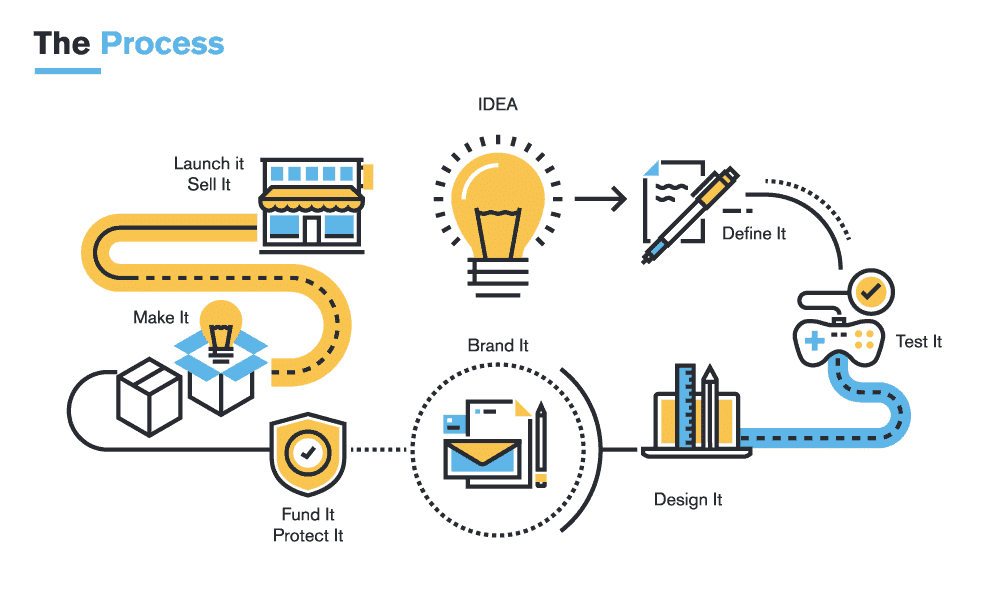
The iterative design process can be applied throughout a product’s development process. At first, you develop a prototype in the iterative process. Then, the prototype should be reviewed by a group not associated with the product to provide unbiased opinions. The information from the focus group, based on user research, should be summarized and incorporated into the next iteration of the design. This process continues and is repeated until user issues have been limited to an acceptable level. Remember that iterative design is intended to keep improving and updating the product as you work so that it meets user needs in the best manner possible.
4. What is an example of iterative design?
Imagine you want to create a delivery app. First, you begin with examining the idea and what problems users may have. In our case, you might wish to make it easier for your customers to quickly find their desired products and finalize their orders. There are several ways that you can take a peek into their daily experiences and figure out what might be frustrating for them. Some examples include focus groups, user interviews, or having them fill in a questionnaire with their user journey. But identifying their most ardent problem is important. So, to make the entire process more accessible, we’ve put together 4 stages to iterative design:
1. Discover solutions
Once you’ve identified a problem to solve, you can begin to create potential solutions. This should be a fairly quick and rough process – not wasting time with finer details so you can quickly scribble down some general concepts. But, the ideas should be good enough that you can explain them to a client or colleague, but broad enough that you wouldn’t be too affected if you were to start again. At this stage, you shouldn’t get too attached to the ideas.
After a few feedback sessions where you and your team narrow down your ideas to a couple of possibilities, you can choose one or two concepts that you want to take forward and begin to prototype.
2. Prototype
Here is where you want to make your designs look and feel fairly realistic, in order for them to be tested to see how they work before moving into production. Prototyping is a cost-effective method to check if the design selected will perform in the way you’d hoped, allowing you to examine additional alternatives before it gets too expensive. Some examples of prototypes can be anything from simple pen and paper wireframes to high-fidelity mockups.
At this point, your product idea is more polished, but you still shouldn’t get too attached to it. If your team has more than one potential idea that is worth exploring, prototyping is a great opportunity to go down several paths. You can test several designs, gather quick user feedback on them, and evaluate which options have the most benefits.
Moreover, we cannot talk about design, without mentioning lean user experience (lean UX). It refers to a mindset, culture, and a process that embraces Lean-Agile methods. To be more precise, it extends the traditional UX role focused on merely executing design elements and anticipating how users might interact with a system. Alternatively, lean UX endorses a more comprehensive and complex view of why a feature exists, its functionality, and the benefits it delivers by getting immediate feedback and obtaining a holistic user experience that addresses the users’ needs.
3. Review the prototype
Now you can begin reaching out to whoever will actually be using the product to obtain their feedback. Don’t fall for the mistake of getting feedback only from the management team or the client company’s executives, and nobody else. Make sure you get the prototype in the hands of people who will be using your product, aiming for customer feedback. The feedback you’ll get in user testing will be gold.
Next, you’ll have to create some sort of metric to analyze your prototype in connection to the problem you are trying to solve. For instance, if one problem you’ve identified is the prolonged period of time it takes for the check out on an order, you could record a metric on the current app of how long it took the users to find the forms to complete, and then compare that to how long it took users on the prototype. If the prototype detects significant improvement in efficiency, you will know you’re on the right path.
4. Iterate
Based on your reviews, you have two choices. Either push forward with your current design and development to fully polish it or go back from the start with your new understanding of the problem. If you’ve had only one iteration, typically the chances are that you will need to iterate at least once more. It’s rather impossible to get things perfect on the first try, and good designs take time to get it right. Once you are happy with your design, you can stop iterating.
However, to simplify the entire process described above, it’s worth mentioning that at Digitalya, we’ve designed and polished a five-day workshop inspired by design thinking methods in which you design, prototype, and validate a business idea. This way, we’ve managed to help business owners validate their startup idea in 5 days that, in turn, accelerated product launch. Our method is pretty straightforward: we define the idea, create a clickable prototype, and facilitate interviews with potential customers. Once you obtain product validation, it is much easier for you to receive investment.
Our approach is meant to simplify the entire process, reducing costs and gaining valuable time. Instead of investing thousands of euros in developing minimum viable products that you don’t know whether they will be used or not, you can invest in a sprint design, test the concept in the market, implement feedback, and only then, build an MVP.
5. What is iterative development?
According to Eastern Peak, iterative development is a:
software development method that breaks the process of developing a large application into smaller parts. Each part, called “iteration”, represents the whole development process and contains planning, design, development, and testing steps. Unlike the Waterfall model, the iterative process adds features one-by-one, providing a working product at the end of each iteration, and increases functionality from cycle to cycle.
Basically, a development team tackles the initial version of a system, knowing it is incomplete or weak in some areas. Then they make the necessary improvements and amendments to those selected areas until the product is satisfactory. With each iteration, the software is upgraded through the addition of greater detail.
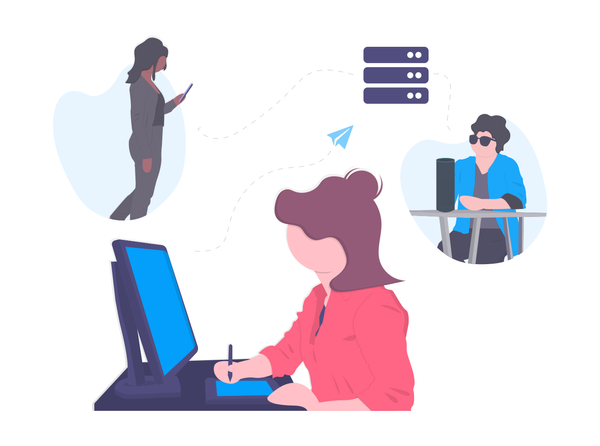
6. What Is the Iterative Process in Scrum?
Firstly, Scrum is part of the Agile method and processes. The Agile iterative approach focuses on delivering value as fast as possible in increments, rather than all at once through a continuous development process. An Agile iteration is a short one-to-two-week period where an Agile team takes a couple of their customer’s most significant user stories and builds them completely as running-tested software. So analysis, design, coding, testing, all happen in one iteration.
According to the Annual State of Agile report:
75% of companies mention faster delivery as the top reason for going Agile with iterative planning being the 2nd most-used Agile technique.
And one reason is that it channels all effort around the need to work on the highest (customer) value features first.
Additionally, the Scrum framework emerged as a way of bringing Agile developers together to work more organized, transparent, and goal-oriented, positively impacting the developer community. This approach focuses on the objective of delivering maximum business value in a minimum time span.
Practically, Scrum development is meant for developing, delivering, and sustaining products in a complex environment by capable teams. Development teams need to break their work into objectives that can be completed within time-boxed iterations, called sprints. These sprints don’t last more than a month, and most commonly they last two weeks.
An iterative process in Scrum is meant to break down large tasks into smaller pieces that can be repeated, refined, and researched throughout the software development cycle. Since the focus is on the teams, Scrum enables fast decision-making by empowering each member to make calculated and data-based decisions.
7. What Is a Non-iterative Process?
In a non-iterative process, you and your team work together to produce a final product without necessarily trying new ideas or directions along the way. Usually, non-iterative processes require more time during the conceptualization and design phase, so that everything works as intended during the testing phase.
And the most common non-iterative process is Waterfall. In the waterfall model, you will define project phases before the project starts. Each phase begins only after a previous phase has been entirely completed. Requirements and resources will typically be unavailable before a project begins, and the goal is to stick to the project plan as much as possible.
8. Conclusion
All things considered, going Agile and choosing Scrum will undoubtedly improve your productivity allowing you to offer your customers valuable and tested products or services. Whether you call it agility, design thinking, or lean UX, it all comes down to a process that is iterative by nature. And iterative frameworks are currently the main approach that companies employ to enjoy success and growth.

